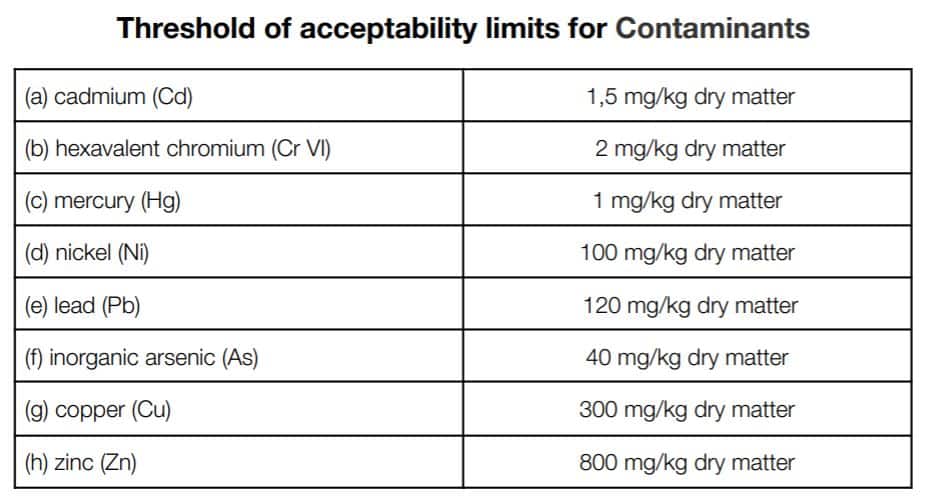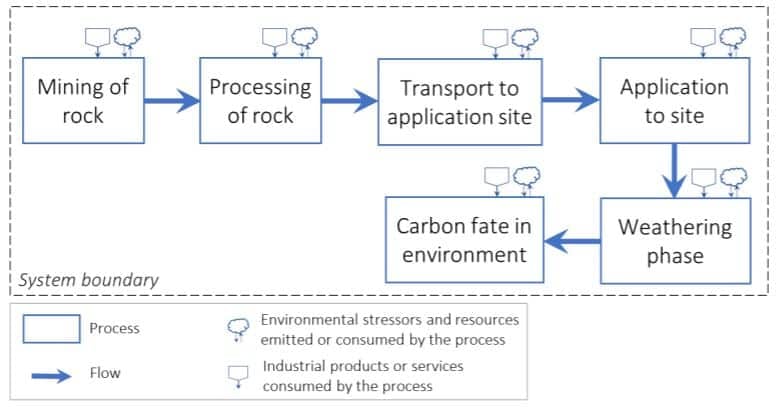Finnish registry Puro.Earth opens a public consultation for the world’s first Enhanced Rock Weathering (ERW) methodology to generate carbon credits.
ERW processes have been considered for around 30 years to remove carbon dioxide. But they’re not part of the existing carbon crediting programs today.
By including ERW to the list of CO2 removal standards, it can enhance safety and profile of the carbon removal technologies.
It is for these reasons that Puro.earth introduces the ERW carbon crediting methodology and solicits helpful ideas.
The carbon credits produced by ERW projects are called carbon dioxide removal certificates (CORCs). They’re tradable digital asset representing a ton of carbon removed from the air.
What is Enhanced Rock Weathering?
Natural rock weathering is a process that takes several millennia to complete. And so ERW comes in to fast track the slow process during which CO2 reacts with rocks.
- Enhanced Rock Weathering is a way of geochemically sequestering CO2 through natural rock chemical reactions. It aims to permanently remove CO2 from the atmosphere.
This carbon removal technique optimize weathering reactions via three ways:
- Selecting the most reactive rock types,
- Increasing the surface area of the rock, and
- Applying rocks to optimal soils and climatic conditions.
In particular, silicate weathering starts with the reaction between water, CO2 and silicate rocks. CO2 is then removed from the air and converted to bicarbonates or carbonates.
Rocks used for ERW are from the Earth’s crust such as peridotite, basalt, feldspars, among many others.
Puro.earth enhanced rock weathering protocol doesn’t specify or exclude rock types. But it sets limits on acceptable levels of the rock’s toxicity.
ERW as a Carbon Removal Method
ERW is one of the two main types of “carbon mineralization” – a process that turns CO2 into a solid mineral.
The other type involves injecting CO2 deep down the underground where it will be stored for good.
ERW involves finely grinding down rocks to boost their surface area and spreading them over soil. This results in permanent storage of CO2 for over 10,000 years.
As a carbon removal method, ERW offers the following key benefits:
- Mineral resources – rock types and application surfaces – are abundant across the globe.
- Rock mining, grinding, and spreading are established technologies.
- ERW is among the most permanent forms of CO2 removal, with little risks of reversibility.
- ERW offers several positive co-benefits in agriculture. For example, enhance agronomic productivity, reduce fertilizer use, and water retention.
- Residual rocks from other processes such as mining are useful for ERW approaches to CO2 removal.
For example, a mining giant, BHP, considered enhancing CO2 capture of its nickel mine tailings. The company believes that doing so can offset its entire mining operations emissions.
But at that time, there’s no framework yet for carbon credits using ERW. Neither Verra nor any other 3rd party carbon standards has it in place.
Enter Puro.earth’s ERW framework…
The ERW process is applicable in terrestrial (soils), coastal and aquatic environments.
But the enhanced rock weathering methodology of Puro.earth considers only the terrestrial or land-based application. It doesn’t cover coastal and aquatic areas.
Under the registry’s Puro Standard, weathering in controlled conditions to produce carbonated material falls under its Carbonated Building Material methodology.
Puro.earth’s ERW methodology is a product of a working group of scientific and carbon market experts. They oversee the registry’s CO2 removal protocols.
The team also ensures high carbon credit integrity and science-based principles for the standard.
Moreover, the group has set safeguards and quantification approaches aligned with the latest science. This is to ensure little to no environmental impact, which is vital to promoting ERW to the public.
More importantly, the protocol sets strict thresholds for toxicity levels of the rock in accordance with the EU regulation for inorganic soil improvers shown in the table.
It also requires ERW projects to perform laboratory tests of soil samples to create baselines. Here’s a diagram showing the general processes involved in an ERW project.
With all the safeguards in place, Puro.earth thinks that projects can be designed and implemented safely. The collected data will eventually help improve the framework.
The public consultation period will be open until October 17, 2022.




